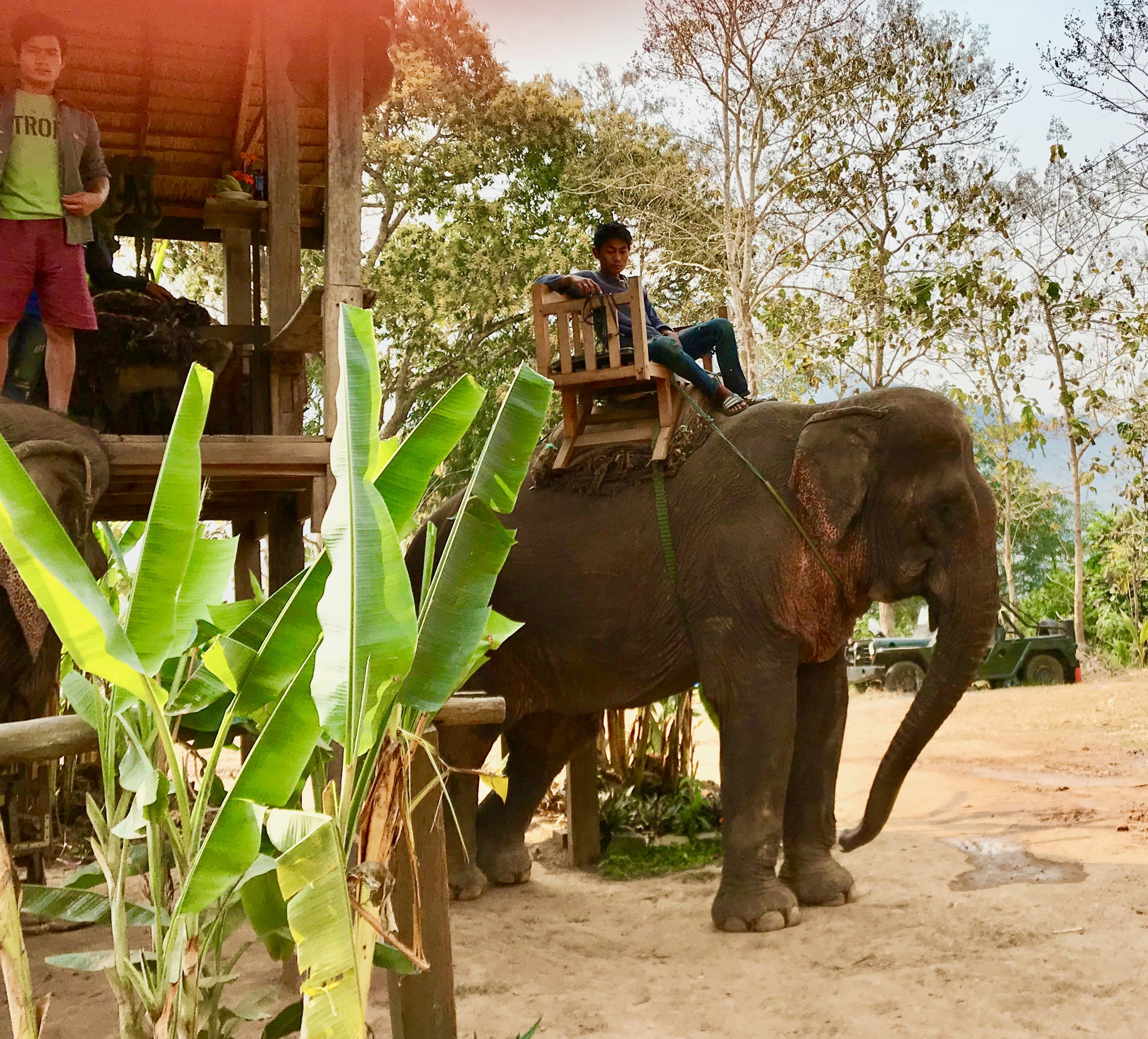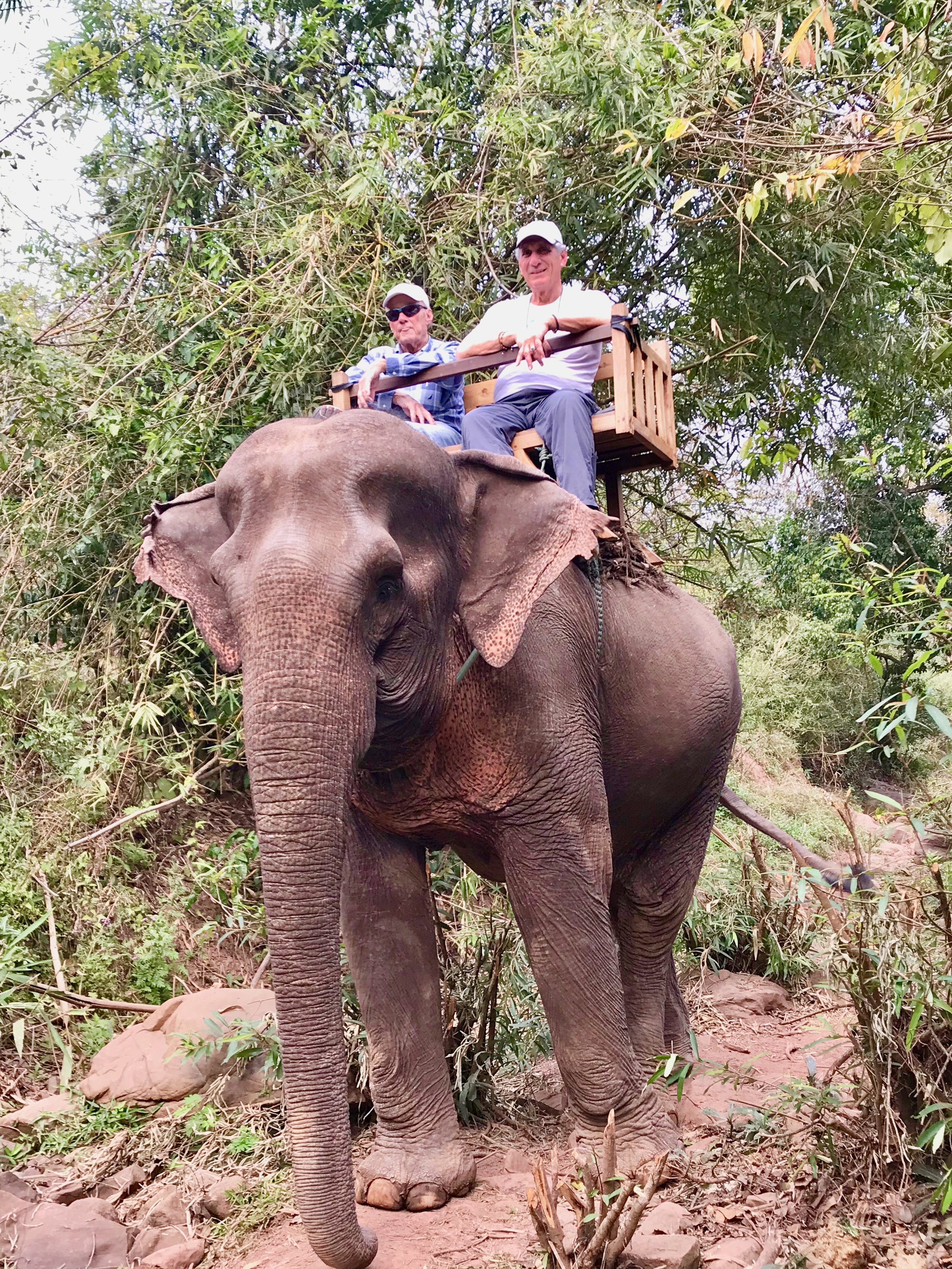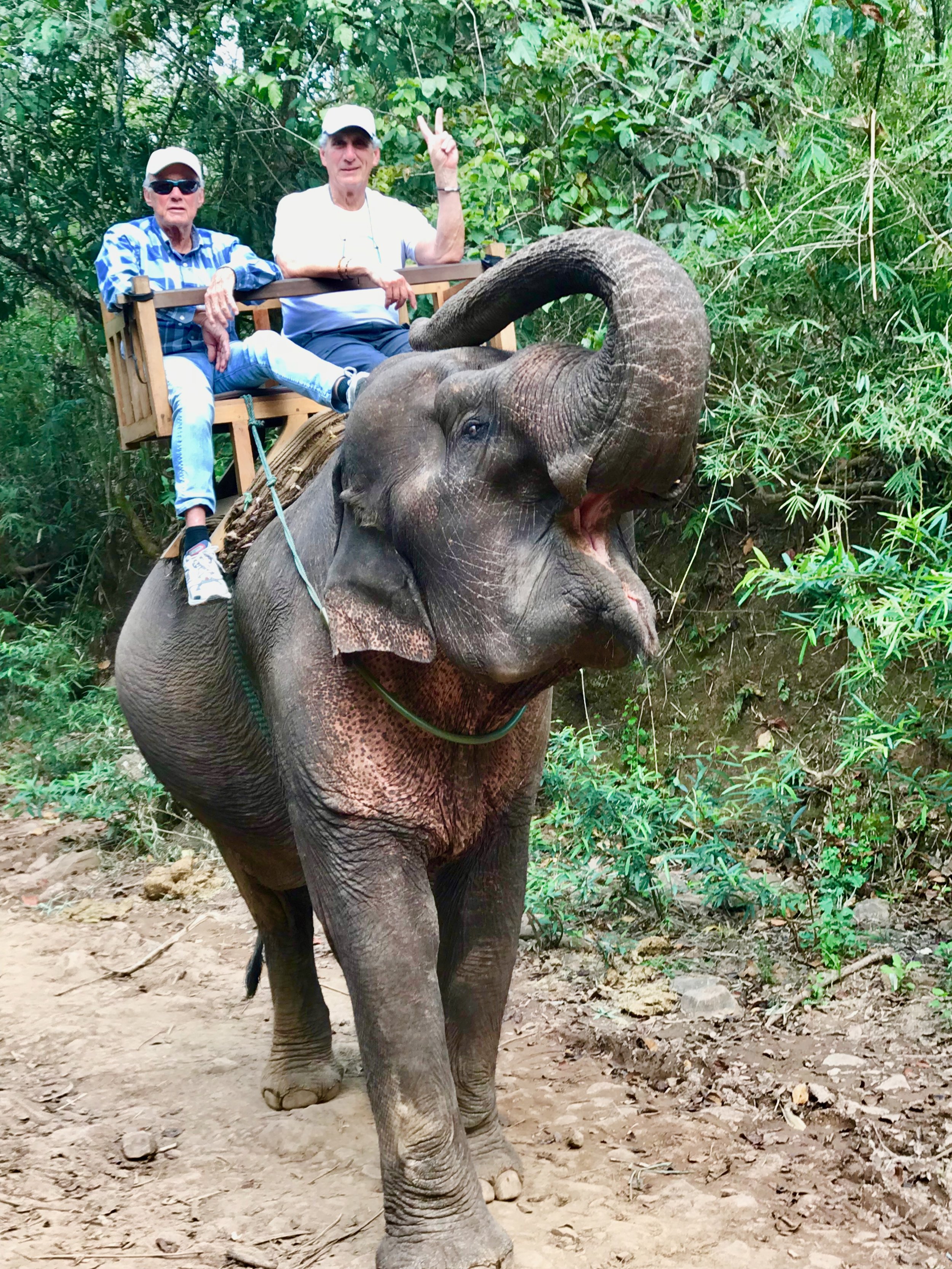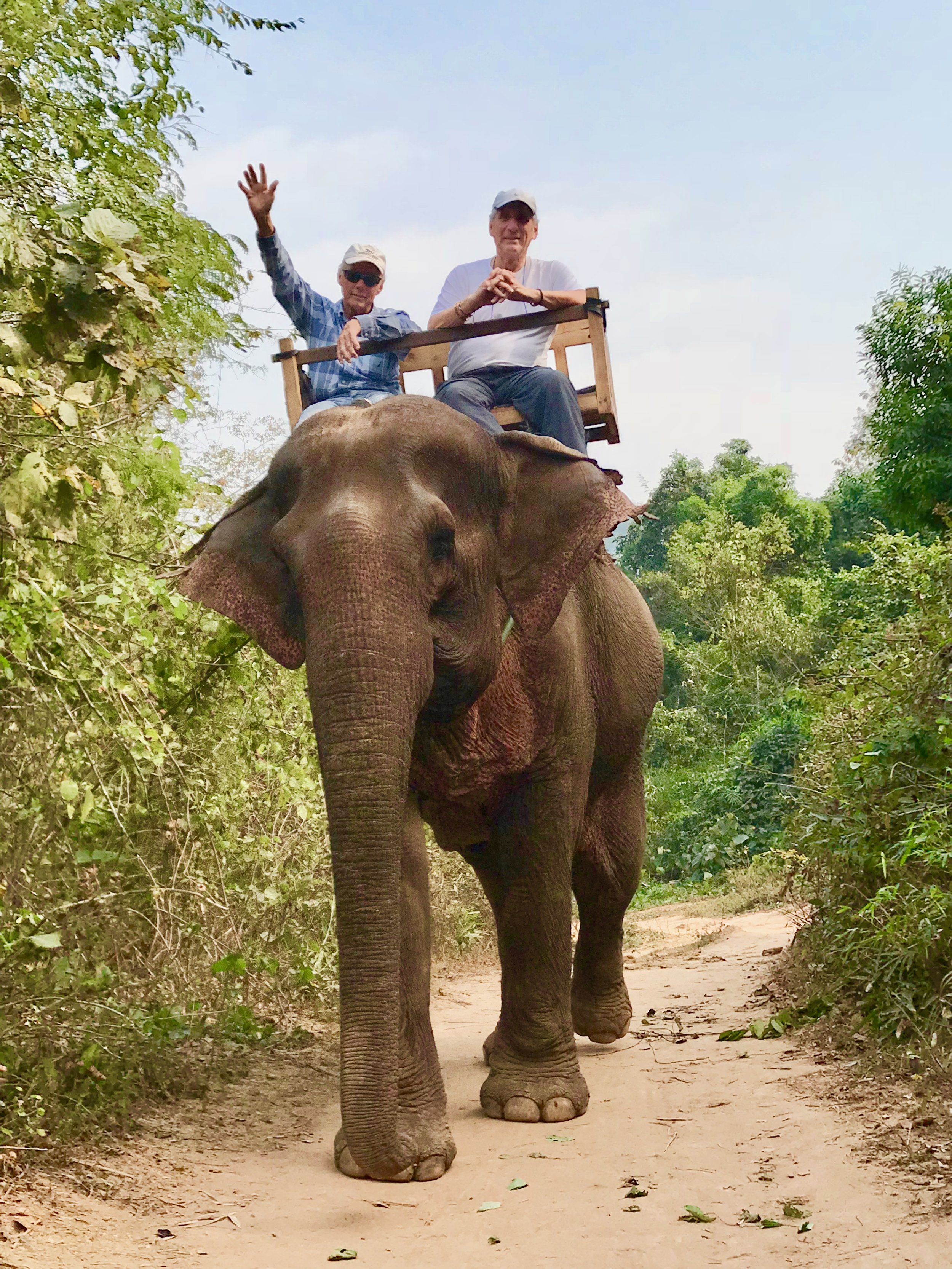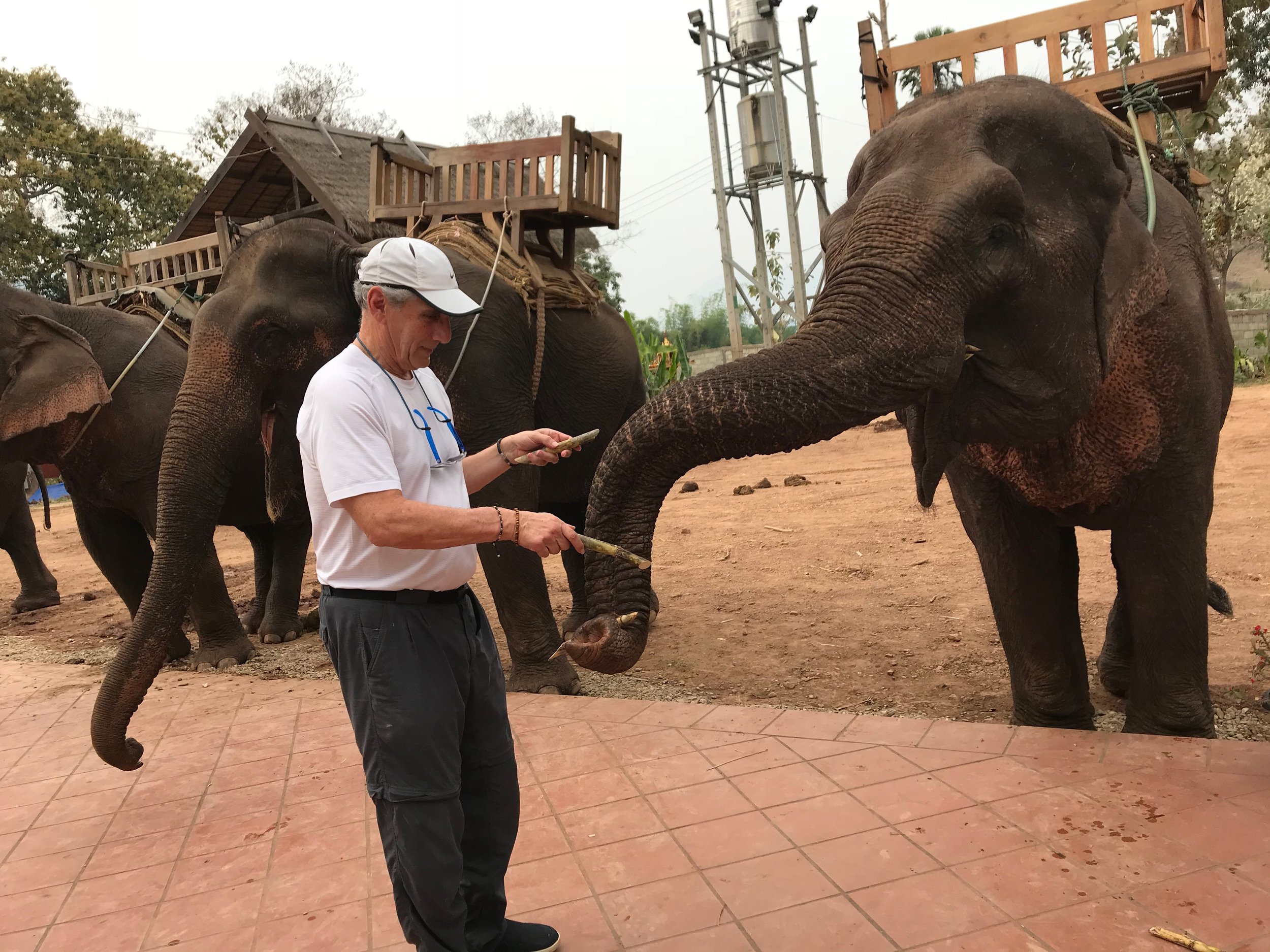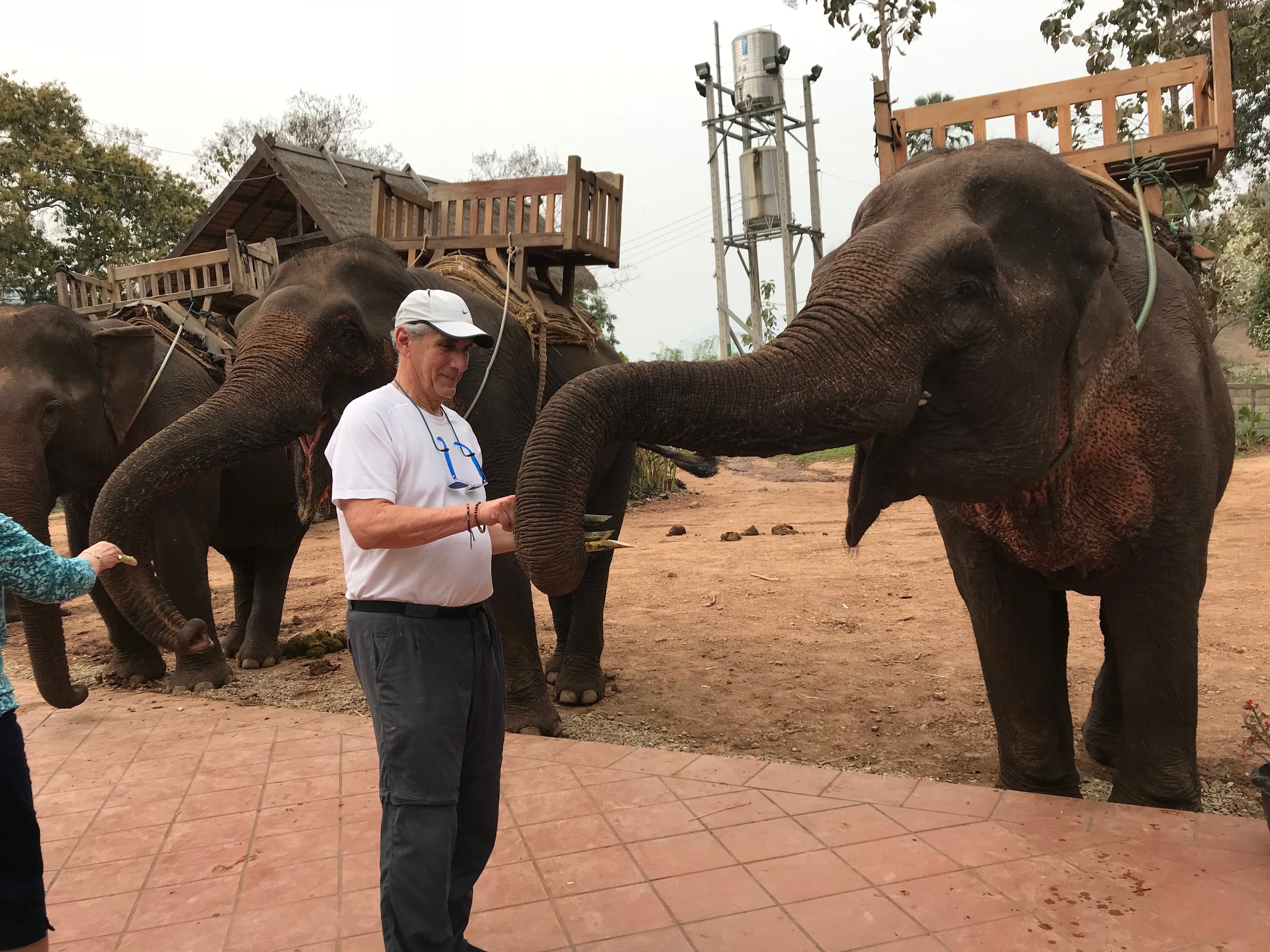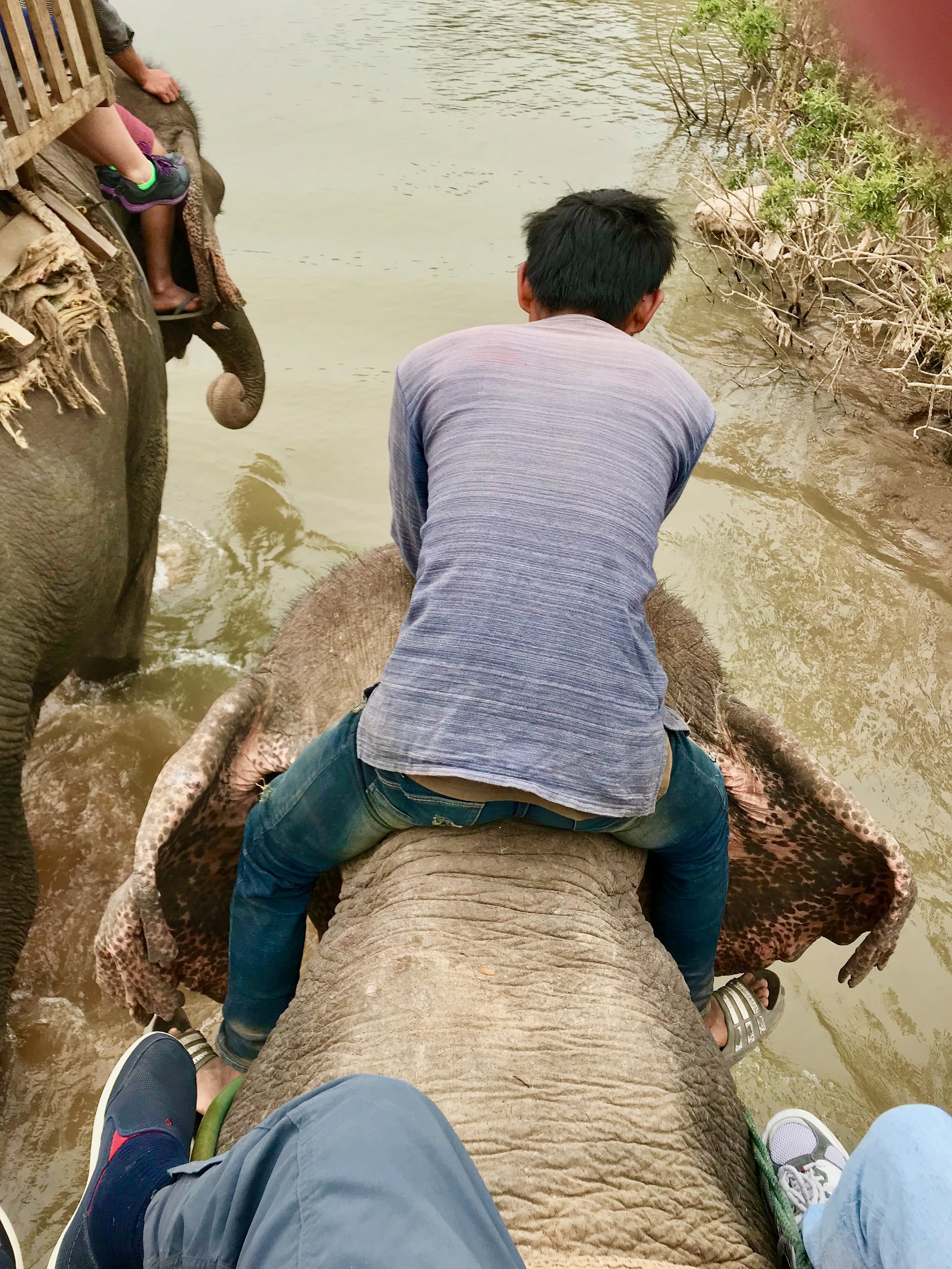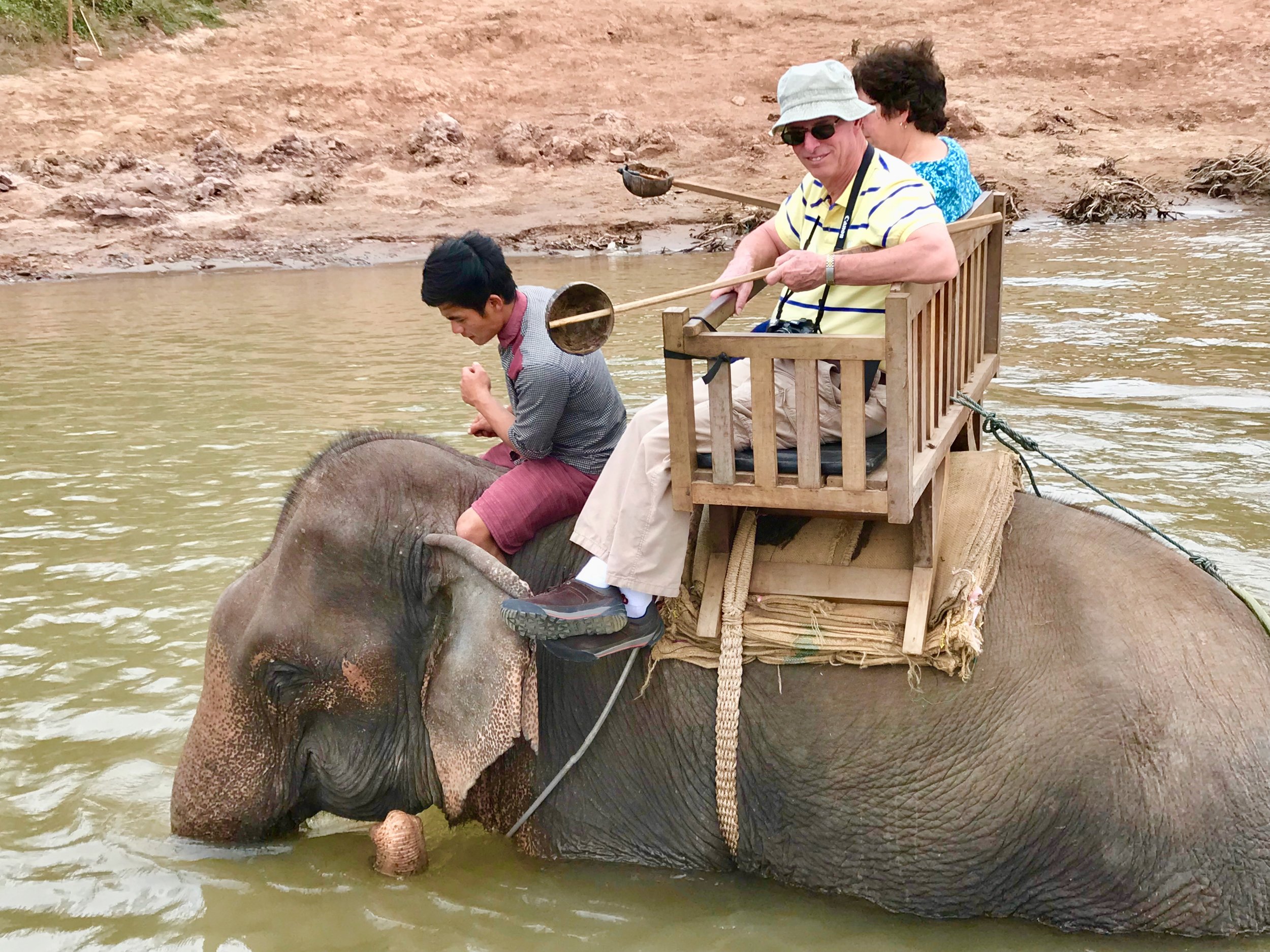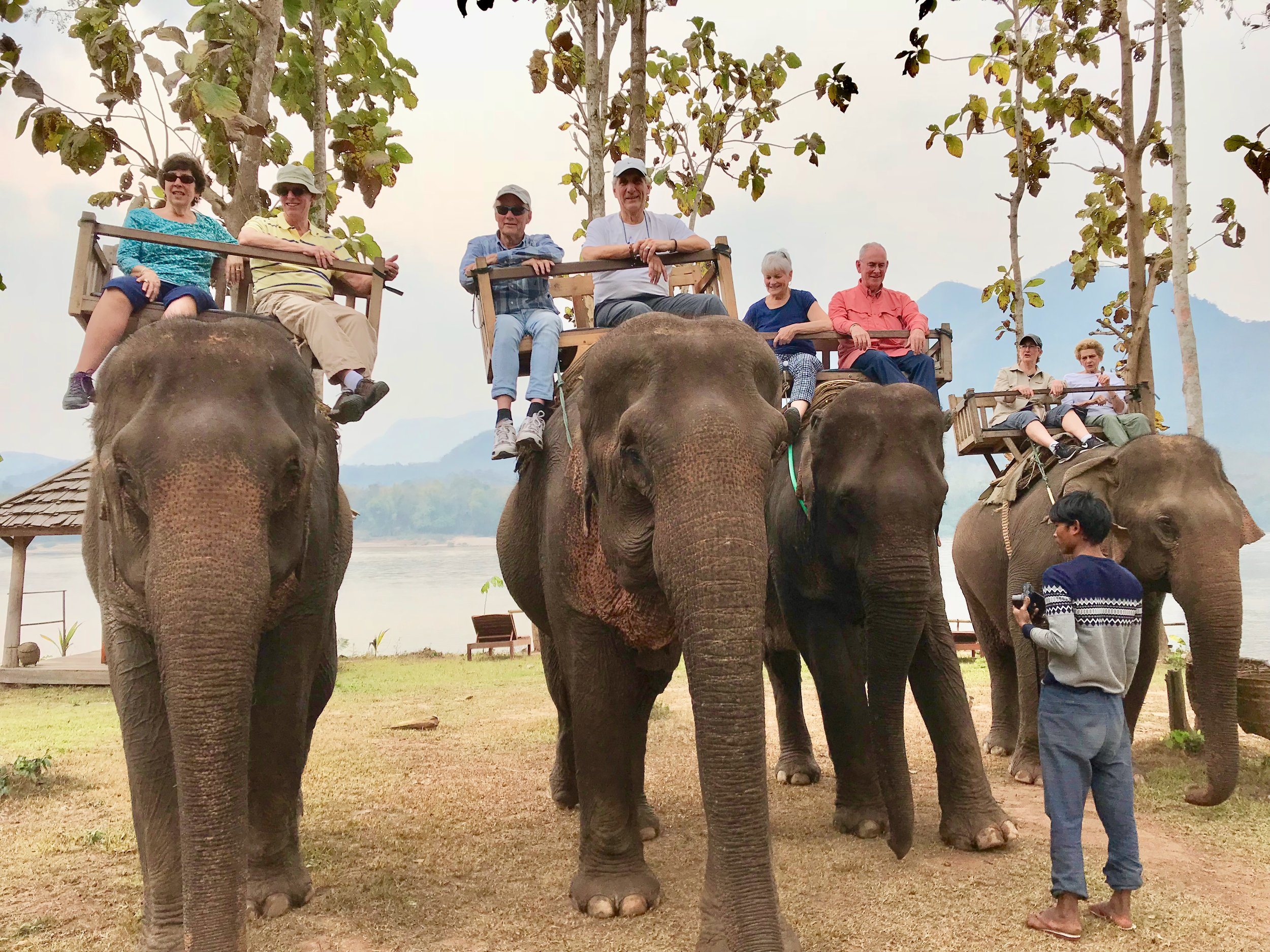Feeding, Riding & Bathing an Elephant on the Left Bank of the Mekong RIver in Laos
“To me, the word wisdom means ancient knowledge…the kind you not only see but feel when you look into the eyes of an elephant or stop…to marvel at the deep wrinkles on its skin, both of which contain the truths learned from each intentional step their…feet and those of their ancestors have placed on the earth.”—Molly Friedenfeld
Eight of 16 in our tour group were driven to the elephant conservation center Ban Xiang Hai situated on the left bank of the Mekong River, north of Luang Prabang, Laos. It was an optional tour offered by Overseas Adventure Travels (OAT). I partnered up with Ed from Colorado. The elephant we were assigned was 32 years old and she weighed 7,495 pounds. She is a vegetarian and eats a variety of food at the camp and in the rain forest and jungle that includes bananas, sugar cane and pineapple. She consumes 551 pounds of food and drinks 17 gallons each day. She swims at Mekong River 4 or 5 times daily. She has lived at the camp for three years and enjoys the company of the other elephants and appeared to enjoy interacting with us throughout our visit. According to its mahout (elephant keeper and trainer) before arriving at the camp she had a difficult life working in servitude for the logging industry, forced to put in up to 12 hours a day—every day. This was the logical argument given as a reason to allow leading tourists on elephant rides.
When we got to the elephant camp we saw the high wooden mounting platform that makes it easier to mount the elephant. After the mahout secured us in place on the wooden howdah (bench) that was placed over a stack of blankets to protect its skin, we were given cut sugar cane to feed the elephant as a way to bond with it. Back in the day I had ridden elephants in India and Thailand (with my son Jason) but never got to feed them. It was a amazing how our elephant would arc its trunk up and over its head in a circular fashion and wait until we placed the food in the curled end of her trunk where she would grasp it securely. But, one wasn’t enough. She would wait patiently until we placed 4 or 5 sugar canes in her grasp before placing it in her mouth. This eating ritual was playfully repeated several times.
The mahout walked in front of the elephant whispering gentle commands as we cantered side to side with each step of this gentle, intelligent creature. From the beginning of the ride, we witnessed the mahout treating the elephant with absolute compassion and kindness. Toward the end of our ride, the young elephant handler gracefully hopped up from a stack of quarry rock and sat on top of the neck of the elephant and led it to the river. He handed Ed and I a long stick and scooper at the end and directed us to repeatedly scoop the water up and pour it over the neck of the elephant. He then gently massaged the water into its neck to help relax it and cool it down. When we made our way back to the elephant conservation camp, we dismounted and the howdah was removed from the elephant’s back and we got to feed it again, this time from ground level. Later, the mahout took it to the Mekong river to get it cleaned and hydrated.
Historically, Laos was once known as the Land of a Million Elephants. Regretably, there are only 800 of these majestic trunk-swingling creatures left, or half of what dwells in the wild. In the 1980s there were an estimated 4000 elephants in Laos, meaning the population has plummeted by more than 75% in the past 30 years. I learned that elephants have no stomach, whis is why they require a lot food and drink a lot of water. They only require 3-4 hours of sleep per day and can live upwards of 90-100 years.
An elephant can carry 30% of its weight. They claim that placing two tourists on a howdah is less than 440 pounds and presents no problem for the elephant. That being said, riding elephants is controversial. The ideal would be for elephant camps like the one our daughter Michelle and husband Kyle visited in Chiang Mai, Thailand last October that is a pure elephant sanctuary that doesn't offer rides. But the sad and harsh reality is that most remaining mahouts would not be able to handle the upkeep of maintaining their elephants without it. The alternative is engaging the elephant in the illegal logging industry or selling them to questionable Chinese sources that would place them in zoos, entertainment venues or farmed, so that their ivory can be harvested. It is a sad but true reality with no easy answers.
Notes: Aside from Ed and I, the folks to our left are Jane and Wayne, and to our right, Mary and Tom and Debbie and Karen.
